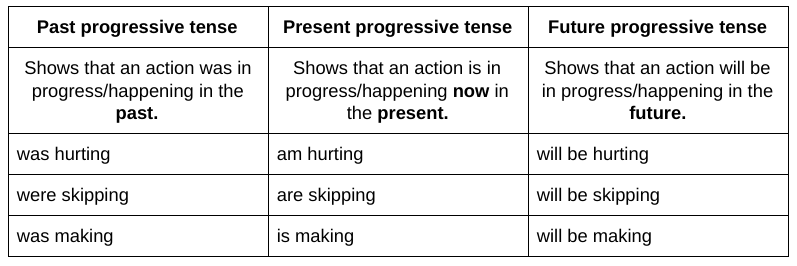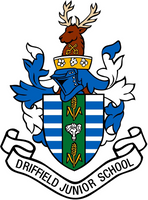Tenses
Simple tenses:
The simple tense shows us whether something happened in the past, present or future. When we use the simple tense, the verb is written in its most simple way. See the table below to see how some verbs change depending on whether they are written in the simple past tense, simple present tense or simple future tense.

Progressive tense:
The progressive tense can be written in the past, present and future. It always written using an auxiliary verb with a verb ending in -ing.
See the table below for more information. Can you spot how the auxiliary verb before the progressive verb changes depending on tense and whether it is singular or plural?

Perfect tense:
The perfect tense is used to show that an action/event has already happened but is still relevant in the future.
We form the perfect tense by using 'have, has or had' and a past participle verb. Be careful when finding the past participle of a verb - it is not just the past tense version. For example, the past tense of 'eat' is ate but the past participle is 'eaten'.
See the table below to see how this works:

Passive and Active voice:
We use the active voice lots in daily speech and in informal and formal writing. However, if we want to make our writing sound more formal, we can use the passive voice to do this.
Passive and active voice is created by altering the position of the subject and object (go to 'Word Classes' to revise this first if needed).
In the active voice, the subject will always be before the verb and object in the sentence:
William kicked the ball.
In the passive voice, we alter the position of the subject and object, bringing the object to the beginning of the sentence and the subject after the verb:
The ball was kicked by William.
The table below has more examples. Sometimes, the passive version sounds a bit strange but this is because is sounds more formal.

Subjunctive Form:
This is a really tricky grammar term that is mainly used in upper school (years 5 and 6). We use the subjunctive form in formal writing. It can also be referred to as the Subjunctive Mood.
It is a little bit different because it doesn't describe any particular time (like past or present) but is mainly used to indicate a wish or imaginary situation.
The Subjunctive Form usually uses the auxiliary verb 'were' to create a more formal sentence instead of using 'was':
If I were to win the lottery, I would buy a boat.
It also uses the verb in its most simple form (not adding any suffixes) to sound formal:
It is vital that she attend the meeting.
